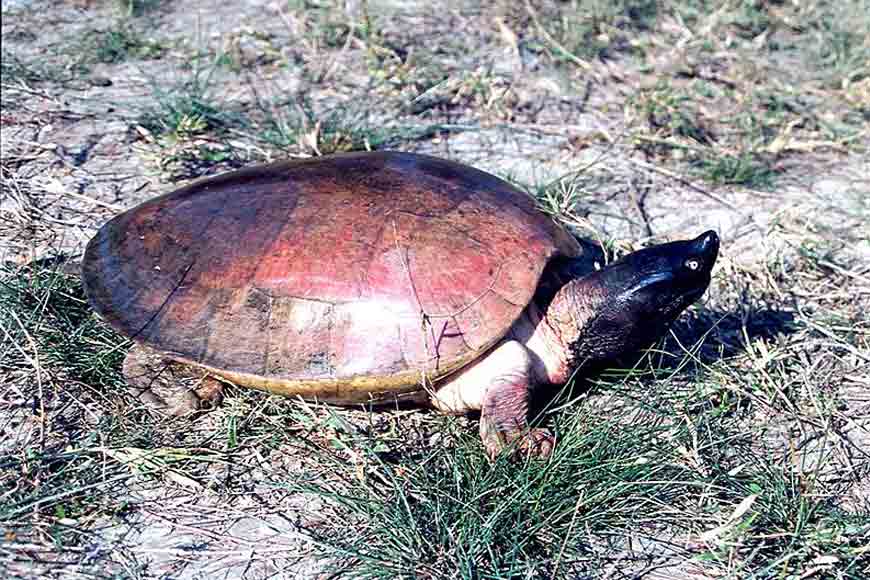West Bengal Forest Department’s conservation drive of rare Batagur Baska Turtle

A critically endangered resident of the Sundarbans is all set to get a new home, beginning a slow journey to recovery from a disastrous decline in the wild. It is more threatened than the Bengal Tiger but far less known. Batagur Baska turtle is presumed extinct in several Southeast Asian countries, is classified as critically endangered by the International Union for Conservation of Nature (IUCN) in its Red List of threatened species.
The Northern River Terrapin (Batagur Baska) is one of Asia’s largest freshwater and brackish water turtles, reaching a carapace length of up to 60 cm and a maximum weight of 18 kg. Its carapace is moderately depressed, with a vertebral keel in juveniles. The plastron is large, strongly angulate laterally in the young, convex in the adult. The head is rather small, with a pointed and upwards-tending snout. The legs have band-like scales. Less than two decades ago, experts and forest officials were not sure if the once plentiful Northern River Terrapin (Batagur Baska) had survived in the wetlands of Sundarbans. Widespread in the coastal mangrove swamps, rivers, and estuaries of Odisha and West Bengal in the early 1900s, unsustainable harvesting had resulted in a sharp decline in its population.

In 2008, a joint exploration of the mangroves and tidal creeks by the Turtle Survival Alliance (TSA) and Sundarban Tiger Reserve (STR) located a cohort of eight males, three females, and one juvenile in a pond at the Sajnekhali Mangrove Center. Since then, the conservation breeding of the critically endangered species has been a success with around 12 adults and close to 370 juveniles of the species having been bred in captivity so far.
Marking a milestone in the conservation efforts, 10 sub-adults Batagur Baska, reared for over nine years, were reintroduced recently in the wild, attached with a GPS tracking device by the experts of TSA and STR officials. The turtles were released into the river with the help of GPS tracking device. Sundarbans is the largest contiguous mangrove forest in the world and the release of the turtles is an attempt to understand the habitat and behavior of these freshwater turtles whose populations in the wild are difficult to track.

Until now, no data was available on the habitat of Batagur Baska -- their breeding grounds, their travel paths, or the best age to release them. The re-wilding will provide crucial data on the species. At present, there are roughly 300-odd individuals and in the future, the number will rise and this information will help to finalize the release of more animals in the wild.

This is the first-ever GPS tagging and tracking of any freshwater turtle in India, providing hope to replicate it in the re-wilding of other threatened turtles in India. The GPS-based tracking will allow field researchers to track the Batagur Baska across the vast expense of mangrove swamps and generate extensive data to better inform future releases. Conservation breeding of the terrapins is jointly being carried out at seven places in the Sundarbans Tiger Reserve.
The battery of these GPS transmitters can last up to 18 months. These transmitters will help to understand the survival and dispersal patterns of the turtles and adjust future large-scale release programs. This will help to generate the basic ecological data on the conservation requirements of the released animals.











